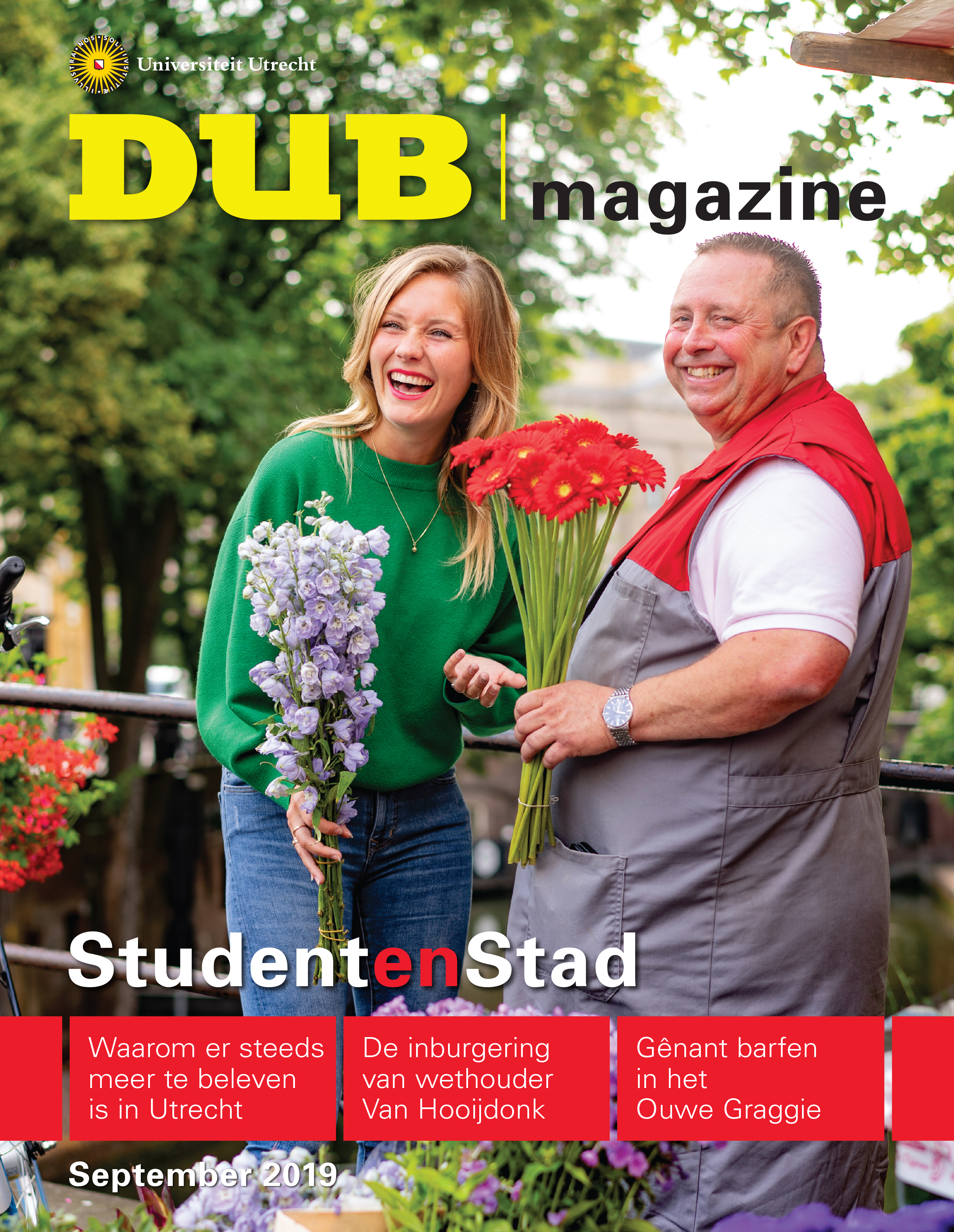Goody-goody Utrecht is becoming more and more badass
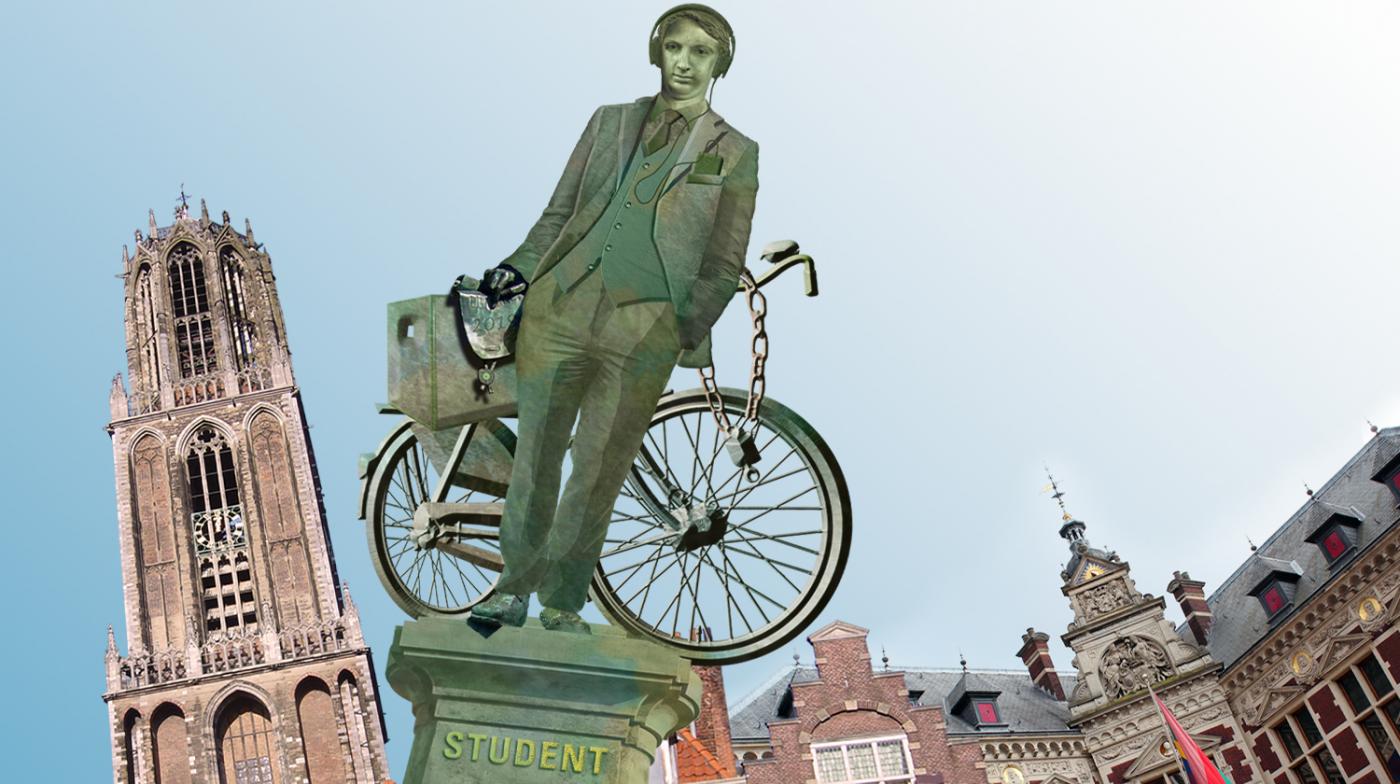
UUUUUUUU!!!!!, hundreds of Triton supporters shouted this spring, as they celebrated that after fifty years, they’d finally won the Varsity again – the most important student rowing competition of the year. The same UUUUUUUU!!!!! is regularly heard these days whenever a band on a stage asks the audience ‘Utrecht, how are you?’ Along with shouting, respondents put their thumb and index finger up in the air, making the shape of the letter U.
This show of affection for their college town is something students, remarkably enough, have copied from FC Utrecht fans. The students in Utrecht aren’t exactly known for their close friendship with the Galgenwaard stadium, even if groups of fraternity students do shower local hero Mark van der Maarel with support once or twice a year by singing from their stadium chairs.
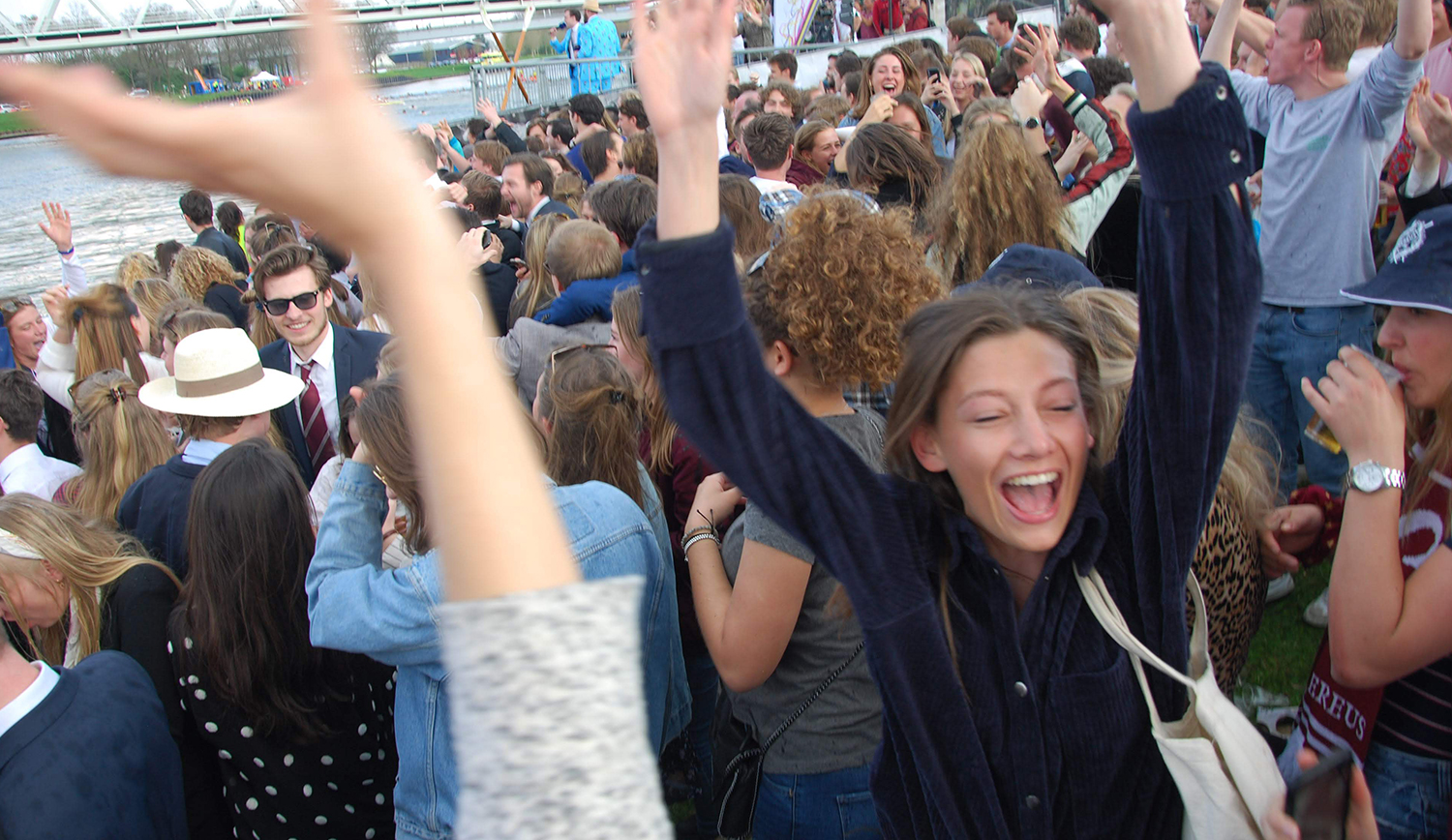
A Moesman town
Students flaunting with the name of their college town isn’t self-evident in Utrecht. That’s not surprising, considering Utrecht’s residents aren’t usually full of praise for their city, or ‘staodsie’ in Utrecht dialect. The pride is there, but remains hidden inside.
Utrecht still seems to suffer from the yoke of the episcopal see. Its image is that of a religious Canon’s city of the past: calm and boring. Renowned city historian Anbertus van Hulzen described Utrecht’s character as follows in the Ublad magazine: “Utrecht residents aren’t loud. They’re very calm people. Almost conservative. With appropriate deference to those higher up.” The supremacy of Amsterdam had given Utrecht an inferiority complex, he assumed. Utrecht residents who’d been students in the early 1970s often talk about the silence in the city. The Oudegracht had a terrace called the ‘Bloemterras’, and there was of course ‘Her Majesty’s First Disco Bar the Woolloomoolloo’, with the fraternity boys at the Janskerkhof. Other than that, Utrecht was like the work of the surrealist painters who found fame in this city – empty streets and dark skies, it was a ‘Moesman town’. For a long time, Utrecht was also a destitute, scuffed-up town; the Voorstraat was a dump, and don’t get me started on the junkie street below Hoog Catharijne. It was half a city, really; there wasn’t anything to do on the other side of the tracks. Lombok was an impoverished working-class neighbourhood.
The revolutionary impetus was never quite as big in Utrecht as it had been in other college towns. There was some resistance against the construction of the A27 motorway through the Amelisweerd area, and against the corporations building Hoog Catharijne. And there was a flourishing squatters’ scene. At the Ganzenmarkt, the ‘Ubica’ building remained a gaudy relic for a long time. But in Amsterdam the cobbles were taken out of the pavement, and in Utrecht they weren't.
Most nearby city
A city with a character as humble as this, won’t attract the most extraverted students. Historically, the university in Utrecht was the most obvious destination for the sons of the landed gentry in the area. The university still attracts many freshmen from the surrounding municipalities. But many others come to Utrecht because it’s so ‘wonderfully central’. Satire news medium De Speld mocked the ranking craze among universities and wrote: “Utrecht most nearby university of the Netherlands”. That might not even be far from the truth.
If you wanted to create a character profile for ‘the’ UU student, an obvious choice would be to include ‘somewhat provincial’. “Utrecht won’t stun you,” a student was quoted as saying in the U-blad. “Utrecht is the Randstad (metropolitan area, ed.) for wusses,” Utrecht-based geographer Josse de Voogd joked.
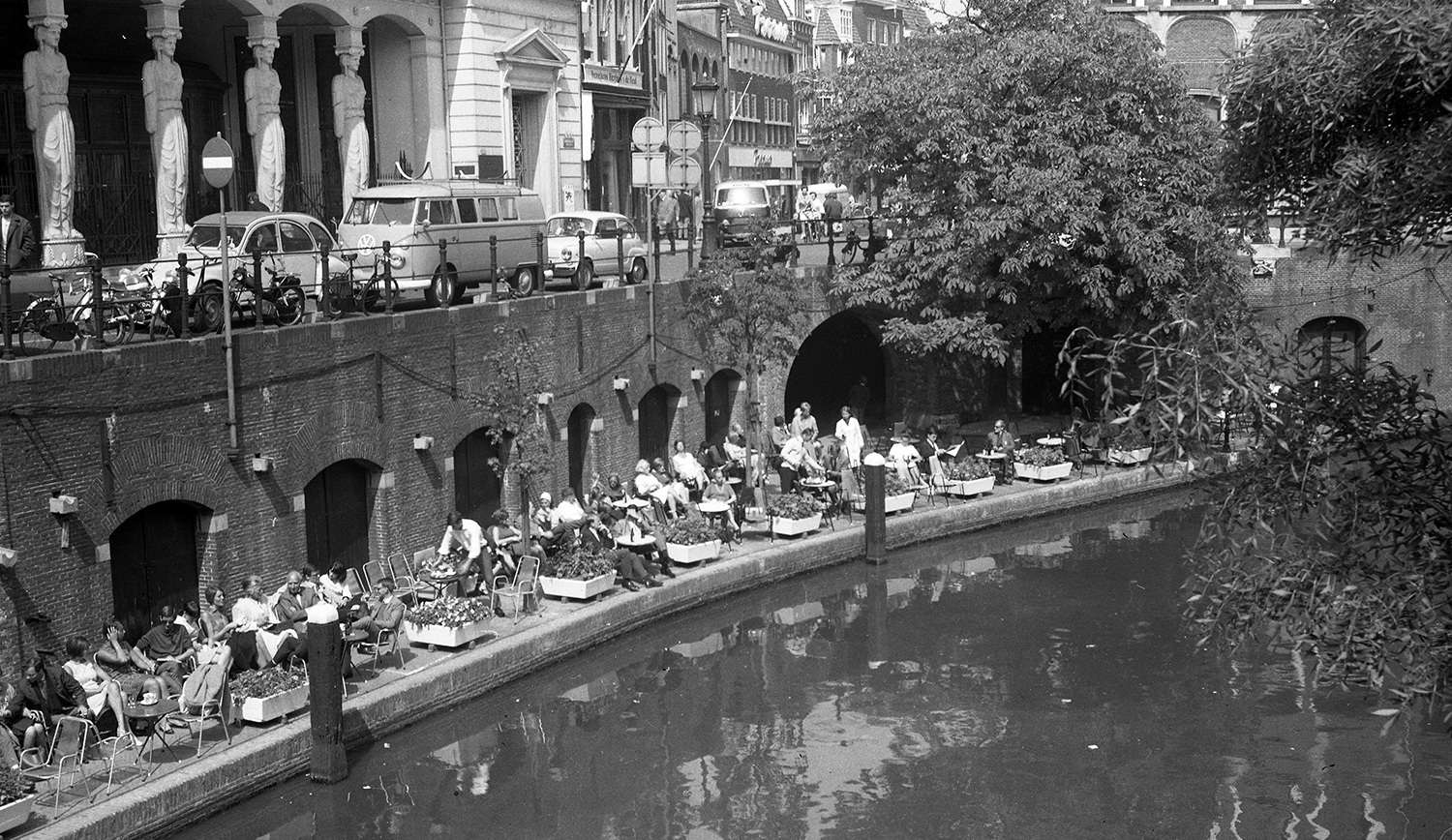
Vocking pride
But now that the Central station and the Singel canals are finally starting to resemble their ultimate shapes, now that TivoliVredenburg exudes some big-city allure, and now the city regularly ranks on listicles of undiscovered tourist destinations, we’ve reached a turning point. Haagse Post columnist Erdal Barci says that in Utrecht, newly-built housing and the historical city centre “make love to one another in the most beautiful harmony”. The city and its residents are showing more balls. And the students, without any ironic intentions, proudly show their connection to the city when they walk through the Nobelstraat in their blue sweaters with the 1636 print (the year the university was established).
The question is whether the opposite is true as well. Is Utrecht proud of its students at all? A study conducted by regional broadcasters and the NOS showed that Utrecht residents are mostly proud of the Dom tower, the canals, FC Utrecht, and the Vocking sausage. Nonsense, Utrecht historian Maarten van Rossem grumbled. “The fact that Utrecht has grown into a fun city throughout the past forty years, is of course mainly thanks to the sizable student population.”
Skoda garage at the Dom square
It’s undeniably true that the liveliness of Utrecht’s city centre has increased a lot in the past few decades. From the late ‘70s on, the Oudegracht developed itself from ‘dirty, smelly ditch’ to a hotspot. In the ‘80s and ‘90s, Fellini below the city hall gained popularity; Utrecht’s students preferred to visit ad hoc parties thrown by student associations in the catacombs of the canals. Strict closing times were abolished; café ‘t Pandje was no longer the only sanctuary for night owls. Only the terraces on the squares took some time before they popped up. The Domplein still had a petrol pump for a Skoda garage. In the ‘90s, however, the hospitality industry in Utrecht experienced a massive growth in size. In the past seven years, it grew by no less than 30 percent. The New York Times says Utrecht now has ‘one of the liveliest terrace cultures in Europe.’ The connection to the increase of the number of students – by fourteen times – is justifiable to an extent. After the massification of education, there wasn’t exclusively an elite that formed cliques within the fraternity. Young people from a variety of backgrounds came to Utrecht. Thanks to study financing and part-time jobs, students even had some money to spend as well.
But there are more factors that played a role. Governments recognised an important impulse for the city’s attractiveness in the ‘night-time economy’. At the same time, consumption needs grew everywhere in the country. Students who had once visited the dining halls or frequented the Connaisseur or Mr. Jack’s for cheap pizza, now had far many places to choose from, including for breakfast, lunch, or a latte. And not just in the traditional centre, but outside that area as well, at Rotsoord for example.
Highly-educated city
There are now around 70,000 people who study in Utrecht, of which around 30,000 also live here. But Utrecht is currently also the fastest-growing city in the country, and is expected to grow to a population of 410,000 within the next ten years. Proportionately speaking, Utrecht has become less a ‘student city’, and more a ‘highly-educated people city’.
After all, one of the reasons for the growth of Utrecht’s population is that many students stay in Utrecht after graduating. And why would you leave? There’s no reason to leave for a job. After the large Demka and Werkspoor factories closed, Utrecht developed itself from industry town to a large facility centre. It’s currently one of the most competitive areas in all of Europe. Additionally, most areas in the Netherlands can easily be commuted to from Utrecht. ‘True Utrechters’, then, are more and more frequently ex-students, from Utrecht itself or other cities. Where back in 2000, 56 percent of all Utrecht residents was born there, that figure now stands around 33 percent – and it’s estimated to be as low as 25 percent by 2030.
Packed in like sardines
That situation also causes some worry. Won’t this cause a division in the city? On social media, people rant about how left-leaning the city is, and about the craziness of suddenly renaming De Uithof “Utrecht Science Park”. And why speak English to one of those international students working as servers in restaurants?
The increase of the number of students has also caused Utrecht enormous mobility issues. Endless streams of cyclists flow as giant masses through the far too narrow cycle paths, while riding the bus feels like you’re packed in like sardines. The new tram line’s capacity will be insufficient before too long.
And then there’s the position of students in Utrecht’s housing market. Students live in the most beautiful spots, cause the cost of homes to skyrocket, and make a mess of things. Some say there are neighbourhoods in Utrecht that suffer from ‘studentification’. The word comes from the UK, where cities like Birmingham and Leeds saw entire neighbourhoods bought up by investors in the 1990s, causing endless social friction.
Lastly, the hospitality industry in Utrecht focuses too much on students and young professionals that still live like they’re students. ‘Student Night rules’. The homogeneous group of visitors and the relatively large share of women mean it’s fairly safe to go out at night in Utrecht, but many residents of the city centre feel things have gotten out of hand with this studenty festivalisation, and they’ve since established protest groups.
They’re recognisable complaints, especially when you realise even the municipality’s politics are dominated by council members who were once (or still are) students in Utrecht, as DUB wrote last year. Professor Mark Bovens expressed his concerns about this. “It more or less creates an image that says the rest of the population doesn’t matter.”
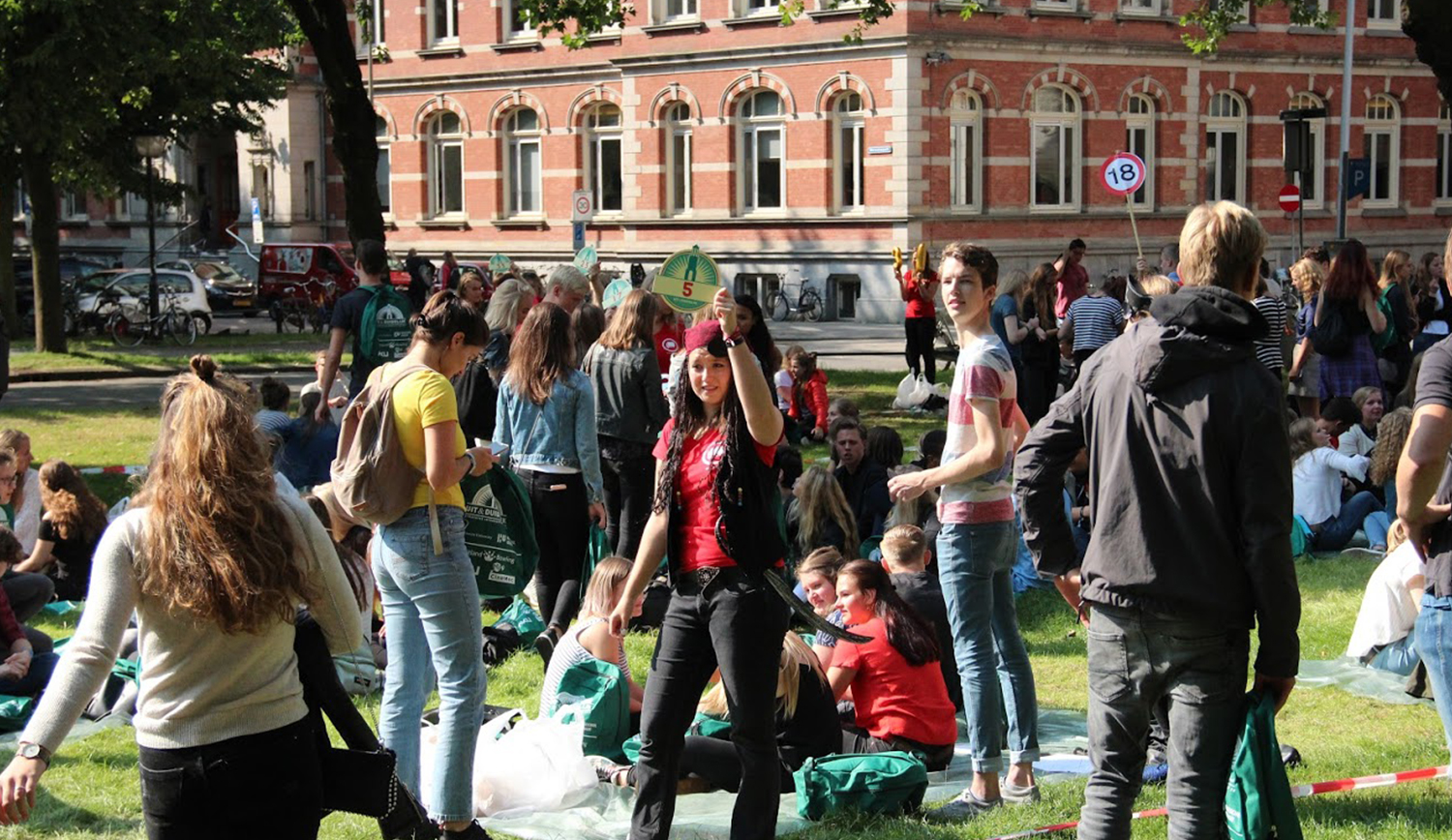
Studentification
The concerns about the division of the city between the large group of highly-educated, privileged residents and the rest should be taken seriously. Researchers in Utrecht also saw, for instance, that residents with a migrant background rarely join the city’s nightlife, possibly due to the lack of bars that play alternative music genres, and the student-aimed focus on drinking beer.
But while students in Amsterdam drown in the city, and in Leiden the opposite is true, the relationship between students and the city seems more balanced in Utrecht. Of course, there is some nuisance, and students often live in their own little bubble. But with so many ex-students as neighbours, there’s also generally a high tolerance level.
And anyway, all those newcomers do contribute to this flourishing economy in Utrecht, help create a flourishing cultural life, and it’s been said they’re also the saving grace of many a moribund sports club. And the ‘studentification’ in Utrecht isn’t nearly as bad as in the UK. It was quickly decided not to allow renting out rooms in struggling neighbourhoods, and later, more and more regulations were put in place for dividing homes into separate rental rooms. When you think ‘student ghettos in Utrecht’ you think, perhaps, the isolated locations of housing complexes like the IBB or Tuindorp-West, or the new high-rise buildings in De Uithof. But those don’t bother many people.
Most Utrechters seem to agree that Utrecht is becoming a nicer, livelier, and perhaps more beautiful city. Four out of five Utrecht residents are satisfied with the cultural activities and cafés and restaurants in Utrecht. Moreover, nearly nine out of ten are satisfied with their own lives in the city.
Students in Utrecht are more than noisy partiers, agreed mayor Jan van Zanen in April at the launch party for a book on Utrecht students 1945-now. By studying here, living here, going out here, doing volunteer work and having jobs here, students contribute enormously to the atmosphere and character of the city, Van Zanen said. “It would be a lot emptier and more boring without them.” Definitely a reason to be proud of the students.
